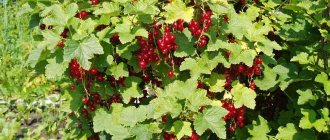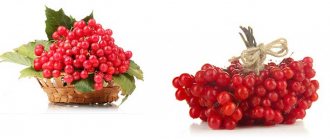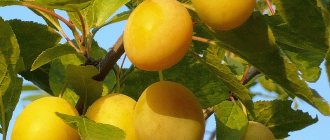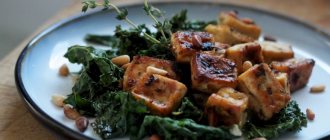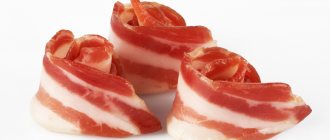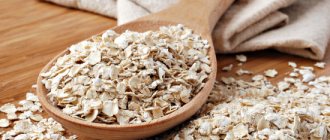Properties of lingonberries
Nutritional value and composition | Vitamins | Minerals
How much do lingonberries cost (average price per 1 kg)?
Moscow and Moscow region.
150 rub.
Translated from Latin, the name lingonberry sounds like “cow grass.” It is not known whether animals really love lingonberries, but people’s love for this berry has long been known and undeniable.
Lingonberry is an extremely common and highly productive shrub. They begin to collect it at the end of summer and do this throughout the fall. It is noteworthy that lingonberries can not only be collected and frozen, but also picked when already frozen. In both cases, lingonberries do not lose their taste and nutritional properties. And the beneficial properties of lingonberries are truly inexhaustible.
Types and varieties of lingonberries
Today, approximately 20 varieties of lingonberries are known. The most popular are:
- Coral . The compact spherical bush has a height of about 0.3 m and the same crown diameter. During the season, it bears fruit twice (in July and September). This variety, characterized by high yield, was bred by Dutch breeders. The fruits weigh about 0.3 grams and are colored deep red or pink. They have a classic sweet and sour taste.
- Mazovia . The variety was bred in Poland. This low-growing shrub is practically a ground cover; it bears fruit twice a season. The slightly sour fruits weigh about 0.25 grams and are dark red in color.
- Erntesigen . The variety was bred by German breeders. The height of the bush is about 0.4 m, the reddish sweet and sour fruits are relatively large, their diameter can be approximately 10 mm.
- Erntekrone . The height of a medium-sized bush is about 0.2 m. Large dark red fruits weigh about 0.4 grams, the taste is sweet and sour. The ripening of berries is observed 2 times per season.
- Ruby . Late variety. The height of the bush is about 0.18 m. The sweet and sour berries weigh about 0.2 grams and are colored dark red.
- Kostromichka . This variety bears fruit only once per season - in mid-August. Dark red, sweet and sour berries can reach 0.7–0.8 cm in diameter.
- Ida . Dense, spherical bushes reach a height of 0.15 to 0.2 m. The rich red fruits weigh from 0.5 to 0.8 grams and ripen very early. The second harvest of the season ripens in September.
- Sanna . The stems are erect, they have a height of 0.15 to 0.25 m. The red, round berries weigh about 0.4 grams. They ripen in August.
- Kostroma pink . The height of evenly branched bushes can reach 0.25 m. This variety is self-fertile, with an average ripening period. The diameter of the berries is from 0.7 to 0.8 cm, their color is dark red. Fruit ripening is observed in the second ten days of August.
This is interesting: The best varieties of honeysuckle with photos, names and descriptions - a detailed review
The following lingonberry varieties are also recommended for cultivation: Erntedank, Red Pearl, Suzy (Sussi), Runo Belyavske, Scarlett, Red Emmerland, Linnea, etc.
Benefits of lingonberries
Lingonberries contain large quantities of organic acids such as malic, citric, and oxalic. In addition to the mentioned acids, lingonberries contain a significant amount of vitamins C, A and E, as well as pectin substances. For example, in terms of vitamin A content, lingonberries are significantly superior to lemons and black currants. The benefits of lingonberries lie in their high content of manganese and copper. Copper has a beneficial effect on the body weakened by diabetes. In the treatment of this disease, lingonberries are an indispensable product.
In folk medicine, lingonberries are also actively used to treat gastritis accompanied by low acidity. No less, and, according to many people, even more useful are lingonberry leaves. Decoctions and infusions from the leaves of this berry have an excellent diuretic effect, so lingonberries are used in the treatment of diseases of the kidneys, gall bladder and bladder. The astringent effect of lingonberries has a beneficial effect on stomach diseases.
Lingonberry juice improves appetite and promotes rapid recovery of the body after illnesses. The benefit of lingonberries is that they have a bactericidal, antiseptic and mild laxative effect. Effective fight against harmful bacteria is possible due to the large amount of benzoic acid contained in lingonberries. Lingonberry is effective for rheumatism, osteochondrosis, fever, gout, colds and many other ailments.
The taste of lingonberries is highly valued in cooking. Lingonberries are used as a filling for all kinds of pies, added to marinades, syrups and various drinks. For long-term storage of lingonberries, they can not only be frozen, but also soaked and pickled. Surprisingly, lingonberry jam and lingonberry juice are often served with meat and game dishes. The calorie content of lingonberries is 46 kcal. per 100 gr. Its use cannot harm the figure, but it will significantly improve the digestion process and the general condition of the body.
Application
In the northern regions of Russia, lingonberries are one of the most popular berries. The harvested fruits are eaten fresh, but most of the harvest is processed. Lingonberries are used to make jam, jam, jam, syrup, marmalade, pastille, and pie filling. Many different drinks are also prepared from berries: juice, fruit drink and compote, kvass and tea, tincture and liqueur, fruit drinks. For the winter, berries are prepared for future use - they are soaked, pickled, frozen, dried and preserved in sugar. Lingonberries are used to prepare sauces for meat dishes, fish and game, put in salads, and added to sauerkraut and fish soup.
Market Analytics
- COVID-19 is changing the rules of the game in the cosmetics market
- Beauty of the future: cosmetic innovations 2020
- New ingredients are the driving force of the cosmetics industry
Convenient search for beauty salons on our website
Beauty salons in Moscow Beauty salons in St. Petersburg Beauty salons in Ekaterinburg Beauty salons in Novosibirsk
Latest blog posts on our website
- Naturecream / Geranium (Pelargonium) oil for skin health and beauty
- Prostye-sovety / Save on a beauty salon: procedures that can be done at home
- Naturecream / Growth Factor - brings back youth?
- Oksana-Lezina / 3 effective abdominal exercises from a fitness instructor for beginners
- Prostye-sovety / Making perfect curls at home
- Prostye-sovety / Which hair removal method to choose
- Naturecream / Wrinkles Puppets
- Naturecream / PEPHA-TIGHT - instant skin lifting
- Naturecream / Blue light - a danger to the skin
- Naturecream / Cocoa Butter – A treat for the skin
Latest forum topics on our website
- Mrs._Smith / Badly sunburned! What to do?((
- Ice / Is it necessary to combine fitness classes with a diet?
- Antonova / What can be used for hair loss?
- Radio operatorKat / Who was on a protein diet?
- Suzanna / Mesotherapy on the face
Other articles in this section
| Rowan Rowan looks like a small tree and belongs to the Rosaceae family. Rowan is a medicinal plant; its fruits, leaves and flowers are used in folk medicine. Widely distributed throughout almost the entire temperate climate zone. Small round fruits are collected in clusters. The red-orange berries have juicy pulp with pronounced bitterness and small seeds. |
| Guarana Guarana fruits resemble hazelnuts in shape and size. They are covered with a skin on top, which bursts as they ripen. Inside each fruit there are 1 or 2 rounded dark brown seeds surrounded by white pulp. It is these seeds that serve as a source of guaranine, an effective stimulant containing 2 times more caffeine than the coffee beans themselves. They are soaked, washed, dried, fried and ground into a powder that is used to make energy drinks and an ingredient in many weight loss medications. |
| Avocado Avocado fruits range in color from light green to dark, and the skin can be smooth or wrinkled. The pulp is most often greenish, with a tart, nutty flavor, and its delicate consistency resembles butter. In the middle of the fruit there is a hard and large brown seed. |
| Mango Delicious in taste, mangoes grow quite large in size. The fruits are oval in shape, smooth and thin skin of yellow or reddish-green color. The large and hard seed is surrounded by aromatic and juicy yellow flesh, which, depending on the variety, can be soft or fibrous. |
| Sea buckthorn Sea buckthorn is a shrub or small tree, reaching a height of 3 meters, the branches are covered with small thorns and densely located fruits on short stalks. The fruits of the plant are small oval berries of yellow-orange color with a refreshing sweet and sour taste and a pleasant aroma, vaguely reminiscent of pineapple. |
| Blueberry Blueberry is a low shrub up to 1 m high with smooth branches and small leaves. Blueberries grow in coniferous forests and damp areas, in the tundra, swamps and peat bogs in the northern regions of Russia. In May, small white or pale pink flowers bloom on the branches, and by the end of summer the fruits ripen. The aromatic berries, blue with a bluish bloom, about 1 cm in diameter, contain many seeds, they have greenish flesh, a juicy, sweet and sour taste. |
| Cloudberry Cloudberry is a herbaceous plant and reaches a height of about 35 cm, found in peat bogs, swampy forests and tundra. During the flowering period in mid-summer, one snow-white flower blooms on each stem. By the beginning of autumn, the first harvest appears - quite large, juicy, sweet, amber-colored berries with a subtle amazing aroma. When unripe, cloudberry berries are red in color and resemble raspberries in appearance. Despite the fact that cloudberries are common in the polar-Arctic region, they do not like snow and do not tolerate frost well. Locals call cloudberries marsh amber, marsh guard, northern orange and moss currant. |
| Juniper Juniper is a coniferous evergreen shrub, which is a relict medicinal plant, grows up to 8-10 m in height and resembles a small cypress in appearance. Juniper is a long-lived plant and lives from 600 to 3000 years. The leaves of the plant look like needle-like, prickly needles. Juniper fruits are blue-black juicy and aromatic cones. They are very sweet, with a spicy resinous flavor and a pronounced pine smell. Juniper berries grow for 2 years and fully ripen by the autumn of the second year: the fruits become soft, acquire a black-blue color with a bluish waxy coating. Usually there are ripe and green buds on one plant. |
| Apricot Apricot fruits have tender and juicy pulp, pleasant to the taste, perfectly quench thirst and hunger, and enrich the body with vitamins and microelements. The famous ancient scientist and healer Ibn Sina believed that apricots should definitely be in the diet of every woman, because eating these fruits gives the skin freshness and elasticity, strengthens hair and nails, and helps fight excess weight. |
| Passion fruit Passion fruits are round or oval in shape and, depending on the variety, yellow or purple in color. Its sweet and sour pulp is hidden under a thick shell and contains many seeds; it is very aromatic and juicy. The surface of the fruit can be smooth and shiny or rough with small cracks. The sweetest fruits are the large, wrinkled fruits with dark purple skin. |
Lingonberry reviews and comments
Sasha
27.08.2013
Dear director! We, Lishan International Trading Company, Now we mainly recommend products including Frozen Lingonberries and Bell Peppers,to Fresh Lingonberries. The present time is finally theft of the season, the quality of lingonberries is good. After a few days there will be a freezer at the processing plant! good price. Will be very selling products .Attached below are 2 copies of raw photos. We also have frozen fresh fruits and vegetables and canned goods. juice concentrates. If you need, please contact me as soon as possible. Waiting for your answer . Sincerely! Sasha
How to eat lingonberries correctly
To obtain the desired therapeutic effect, it is advisable to understand in advance the rules for using the plant in question. Here are some recommendations from experts :
Lingonberry juice will help normalize and stabilize the psycho-emotional background, improve the functioning of the central nervous system, get rid of headaches and general weakness.
- Fresh berries reduce the amount of “bad” cholesterol in the blood; they can also be eaten to prevent atherosclerosis, in the treatment of coronary heart disease and high blood pressure.
- Juice from lingonberries has a beneficial effect on the functioning of the intestines - in particular, it improves peristalsis, relieves chronic constipation, and normalizes microflora.
- Lingonberry infusion from leaves helps to cope with diseases of the kidneys, liver, and gall bladder - it should be one of the components in complex therapy.
- A mixture of lingonberries and honey is useful for tuberculosis, pneumonia, chronic and acute bronchitis, and coughing up blood.
- Lingonberries significantly enhance the effect of antibacterial drugs and sulfonamides - this product is also recommended by doctors for use by people who are in the recovery period after severe pathologies and/or surgical interventions.
- A decoction of lingonberry leaves will be useful for gout, chronic fatigue, decreased immunity, and treatment of skin diseases. Such decoctions will save a pregnant woman from edema in the second half of pregnancy and will help to quickly cure diseases of the oral cavity (stomatitis, gingivitis).
Lingonberries are not only a tasty berry that is used to make fruit drinks, pies, jams and compotes. This small-sized shrub can bring tangible benefits to human health - even if there is no need to carry out therapy with lingonberries, then strengthening the immune system, relieving chronic fatigue and improving the psycho-emotional background will never be superfluous.
5, total, today
( 194 votes, average: 4.71 out of 5)
Lettuce: benefits and harm
The benefits and harms of artichoke
